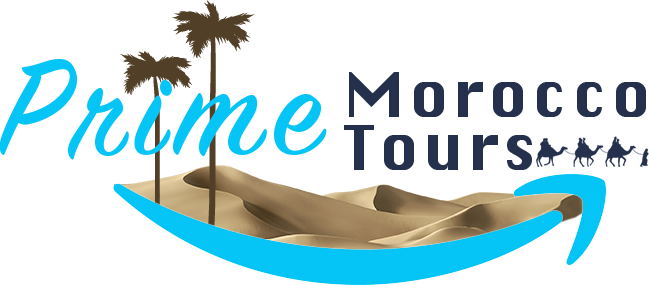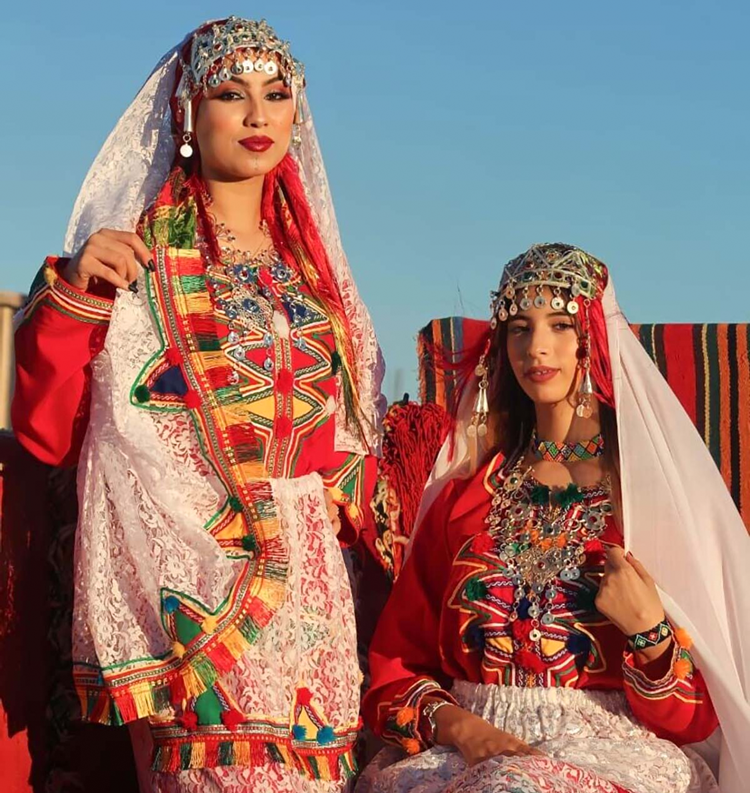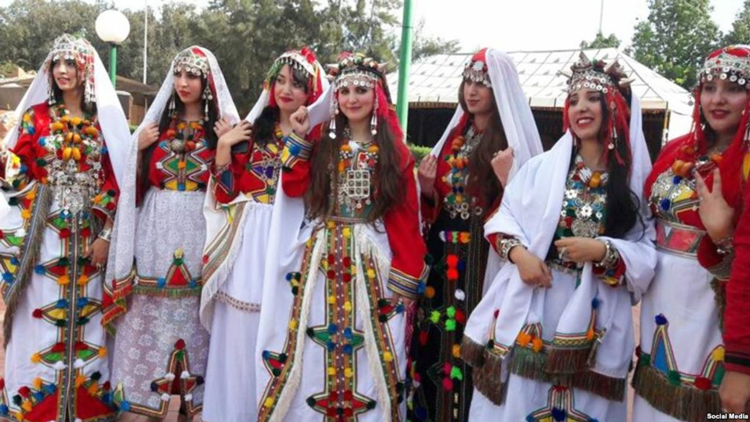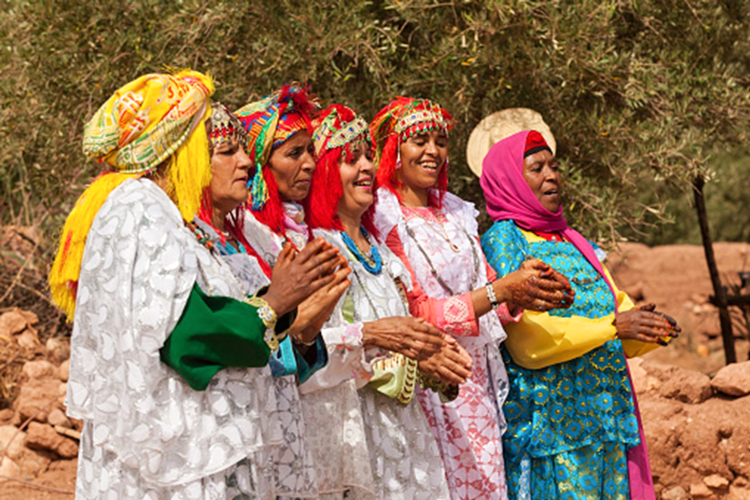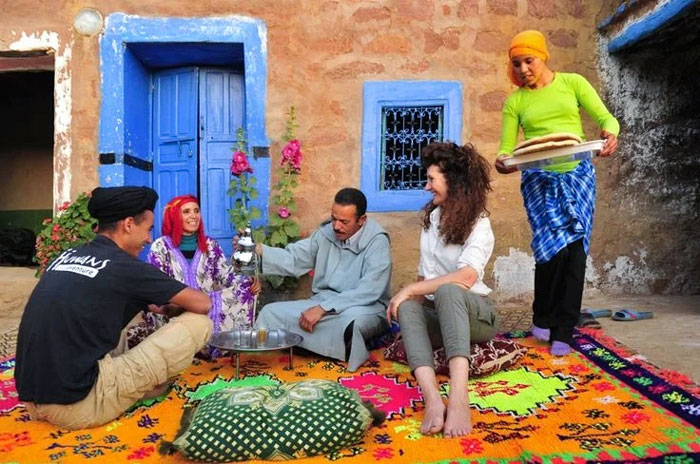The Amazigh People of Morocco & Morocco People in General
Morocco, a country of diverse cultures, landscapes, and histories, is deeply shaped by its indigenous population, the Amazigh people. Known for their rich cultural heritage, the Amazigh (often referred to as Berbers) have been living in North Africa for thousands of years. Their traditions, language, and customs remain a vital part of Morocco’s identity today, contributing to its unique cultural tapestry.
1. Who are the Amazigh?
The Amazigh people are the indigenous inhabitants of North Africa, with a history that stretches back over 5,000 years. The term “Berber” was historically used by outsiders (mainly the Greeks and Romans), but the people themselves prefer the term Amazigh, meaning “free people” or “noble people.”
The Amazigh are not a homogeneous group but are made up of various tribes and communities spread across the Maghreb region, which includes Morocco, Algeria, Tunisia, Libya, Mali, and Niger. In Morocco, the Amazigh population makes up a significant portion of the country’s demographic, and their cultural influence is deeply woven into the nation’s traditions, art, music, and way of life.
2. Amazigh History: A Legacy of Resilience
The Amazigh people have a long and resilient history, marked by their ability to maintain their cultural identity despite the influence of numerous invaders and civilizations. They have inhabited the mountainous and desert regions of North Africa since prehistoric times and have been known for their fierce independence and adaptability to different environments.
Pre-Islamic Era
Long before the Arab-Muslim conquests of the 7th century, the Amazigh people had developed a highly sophisticated culture and society. They were known for their mastery of agriculture, trade, and architecture. The Amazigh engaged in trade across the Mediterranean and Sahara, establishing connections with ancient Egyptians, Phoenicians, Greeks, and Romans.
During the Roman period, some Amazigh tribes allied with the Romans, while others resisted foreign rule, maintaining their autonomy in the Montañas del Atlas and the Sahara Desert. The famous Queen Kahina, a legendary Amazigh warrior-queen, became a symbol of resistance against the Arab-Muslim expansion in North Africa in the late 7th century.
The Arrival of Islam
The Arab conquest in the 7th century brought Islam to North Africa, which the Amazigh people eventually embraced, blending it with their cultural practices. While the majority converted to Islam, they maintained many of their pre-Islamic traditions and customs. Over time, the Amazigh played a pivotal role in the spread of Islam, particularly during the reign of the Almoravid y Almohad dynasties, both of which were founded by Amazigh tribes.
Colonialism and Modern History
During the colonial period in the 19th and 20th centuries, European powers (primarily France and Spain) imposed their rule over Morocco, creating tensions within Amazigh communities. Despite this, the Amazigh people continued to preserve their culture, language, and traditional way of life. In post-independence Morocco, the Amazigh people have worked to assert their identity and rights within the national framework.
In 2011, the Amazigh language, Tamazight, was officially recognized as the official language of Morocco, marking a significant milestone in their history of cultural preservation.
Discover the Heart of Morocco – Embrace the Amazigh Spirit
Step into a world of ancient traditions, vibrant culture, and timeless heritage. Join us on a journey through Morocco to connect with the proud Amazigh people — guardians of the mountains, deserts, and ancestral wisdom.
Book your cultural experience today and uncover the soul of Amazigh Morocco!
3. Amazigh Language: Tamazight
One of the most defining aspects of Amazigh identity is their language, Tamazight. It is part of the Afro-Asiatic language family and has several dialects spoken across different regions of Morocco, including Tashelhit, Tamazight (Central Atlas), and Tarifit (Northern Rif). These dialects reflect the diversity within the Amazigh communities themselves.
The Tifinagh Script
The Amazigh language has its unique script, Tifinagh, which has been used for centuries. The script is characterized by its geometric shapes and was historically used by the Tuareg people of the Sahara. Today, Tifinagh has been modernized and is taught in schools as part of efforts to revive and preserve the Amazigh language.
While Tamazight is now recognized as an official language, its inclusion in education and the public sphere has been a gradual process. Many Amazigh people are bilingual or trilingual, speaking Tamazight, Darija (Moroccan Arabic), and often French.
4. Amazigh Culture and Traditions
The Amazigh culture is rich and multifaceted, deeply connected to the land and environment of Morocco. Their traditions reflect a strong sense of community, spirituality, and resilience, passed down through oral histories, music, craftsmanship, and festivals.
Music and Dance
Amazigh music is an integral part of their cultural identity, with each region having its unique style. Traditional instruments include the bendir (a type of frame drum), ghaita (a type of reed flute), and lotar (a lute-like instrument). Music is often accompanied by dancing, and one of the most famous Amazigh dances is the Ahwach, performed during communal celebrations and festivals.
Another popular dance is the Ahouach y Ahidus, where dancers form circles, moving rhythmically to the beat of the drums and chanting poetry. These dances are not just a form of entertainment but are a way of expressing communal unity and cultural pride.
Clothing and Jewelry
Amazigh traditional clothing is distinct and colorful, often made from wool or cotton and adorned with intricate embroidery. Women’s garments, especially in rural areas, feature brightly colored capes and headscarves, while men wear djellabas or burnooses (hooded cloaks).
Amazigh women are also known for their elaborate silver jewelry, which often features geometric patterns and semi-precious stones like coral, amber, and turquoise. These pieces are not just decorative but carry symbolic meanings related to fertility, protection, and social status.
Amazigh Festivals
One of the most important festivals in Amazigh culture is Yennayer, the Amazigh New Year, celebrated in January. It marks the beginning of the agricultural calendar and is a time for family gatherings, feasts, and traditional songs. The festival reflects the Amazigh connection to the land and the cycles of nature.
Another significant event is the Imilchil Marriage Festival, held in the Atlas Mountains. It is a traditional Amazigh festival where members of the Ait Hadiddou tribe gather to celebrate love, marriage, and cultural heritage. Couples from the tribe come together to be married in a collective ceremony, symbolizing the importance of community in Amazigh life.
5. Amazigh Contribution to Moroccan Society
The Amazigh people have made significant contributions to Moroccan society, shaping the country’s art, architecture, politics, and even its cuisine. Their influence is evident in many aspects of daily life in Morocco.
Architecture
Amazigh architecture is one of the most enduring legacies of their culture. The Kasbahs y Ksours (fortified villages) found throughout the Montañas del Atlas y Sahara Desert are iconic symbols of Amazigh ingenuity. These structures, built from earth and clay, are designed to withstand the harsh climate of the desert, reflecting the Amazigh people’s deep understanding of their environment.
Perhaps the most famous example of Amazigh architecture is the Ait Benhaddou, a UNESCO World Heritage site. This ksar (fortified village) near Ouarzazate showcases the traditional Amazigh building techniques, with its earthen structures blending seamlessly into the surrounding landscape.
Cuisine
Amazigh cuisine is hearty and flavorful, often centered around locally sourced ingredients like grains, vegetables, and meat. One of the most iconic Amazigh dishes is Tajine, a slow-cooked stew made with meat, vegetables, and spices. Couscous, another staple of Amazigh cuisine, is traditionally prepared on Fridays as part of communal family meals.
Herbs and spices such as cumin, coriander, y saffron are frequently used, reflecting the Amazigh’s deep connection to the land and its natural bounty.
Handicrafts
The Amazigh are renowned for their handicrafts, particularly weaving, pottery, y jewelry making. Amazigh rugs, often handwoven by women, feature bold geometric designs and are sought after for their quality and craftsmanship. Each rug tells a story, with patterns and symbols that hold personal and cultural significance.
Amazigh Identity in Modern Morocco
In modern Morocco, the Amazigh people continue to assert their cultural identity and fight for their rights within the broader national context. The recognition of Tamazight as an official language in 2011 was a major victory for the Amazigh cultural movement, and efforts to preserve and promote Amazigh culture have gained momentum in recent years.
Various cultural associations and NGOs are working to revive Amazigh traditions, language, and history through education, festivals, and media. In cities like Fes, Marrakech, y Rabat, Amazigh culture is increasingly celebrated as a vital part of Morocco’s national identity.
The Amazigh Legacy
The Amazigh people have played a central role in shaping the cultural and historical landscape of Morocco. Their rich heritage, reflected in their language, traditions, music, and craftsmanship, continues to thrive in the face of modernization and globalization. As Morocco moves forward, the Amazigh community’s enduring legacy serves as a reminder of the country’s deep-rooted diversity and the importance of preserving cultural identities.
For those traveling to Morocco, exploring Amazigh culture offers a deeper understanding of the country’s rich heritage, revealing a people whose resilience and pride have helped define the very essence of Morocco.
Discover the Heart of Morocco – Embrace the Amazigh Spirit
Step into a world of ancient traditions, vibrant culture, and timeless heritage. Join us on a journey through Morocco to connect with the proud Amazigh people — guardians of the mountains, deserts, and ancestral wisdom.
Book your cultural experience today and uncover the soul of Amazigh Morocco!
What You Should Know About Morocco People in General?
Morocco is a country rich in culture, history, and diversity. Located in the northwest corner of Africa, it stretches from the Mediterranean coast and the Atlantic Ocean to the sands of the vast Sahara Desert. With a population of nearly 36 million, Morocco’s beauty isn’t just in its landscapes; it’s in its people.
The Morocco people are a living reflection of the country’s deep heritage and regional variety. From the bustling cities of Casablanca and Rabat to the remote villages in the Atlas Mountains and the dunes of the Sahara, the people of Morocco are as diverse as the lands they inhabit.
The Amazigh People of Morocco
Long before the Arabs arrived, the Amazigh people were already living across Morocco. Today, they represent a significant part of the population and are spread across various regions:
-
Riffians in the north, around the Rif Mountains
-
Chleuhs (Shilha) in the southwest
-
Soussi Berbers around the Souss Valley
-
High Atlas Berbers, who inhabit the central mountain ranges
Each group has its own dialect, traditions, dress, and customs, yet all share a deep connection to the land and a fierce pride in their identity.
Arabs in Morocco: A Legacy Since the 8th Century
Arab migration began in the 7th and 8th centuries during the Islamic expansion. These newcomers settled mostly in the plains and coastal regions, introducing Islam and the Arabic language. Over time, their influence merged with local Amazigh culture, forming the foundation of modern Moroccan society. Today, most Morocco people identify with both Arab and Amazigh roots in one way or another.
Moroccan People by Region: A Cultural Tapestry
The people of Morocco are often defined not only by their ethnicity but also by the regions they come from. Each part of the country offers its own rhythm of life, cultural expression, and social norms.
-
Northern Morocco (Tangier, Tetouan, Chefchaouen): Influenced by Andalusian and Mediterranean cultures. Spanish is commonly spoken, and the architecture reflects Moorish roots.
-
Eastern Morocco (Oujda, Berkane): Known for their conservative traditions and strong community bonds.
-
Central Morocco (Fes, Meknes): The spiritual and intellectual heartland. Home to ancient universities, artisans, and religious scholars.
-
Western Morocco (Casablanca, Rabat, El Jadida): Urban, cosmopolitan, and economically vibrant. This region reflects the modern side of Morocco.
-
Southern Morocco (Agadir, Guelmim, Sahara Desert regions): Known for desert hospitality and Sahrawi traditions. Nomadic roots and camel caravans still play a role in the cultural identity.
-
Mountain Regions (Atlas & Rif Mountains): Rugged and traditional. Life revolves around agriculture, herding, and tight-knit village communities.
The Character of Moroccan People
What makes Moroccan people stand out is their unique ability to blend tradition with modernity. You’ll see a grandmother teaching her grandchild ancient Amazigh proverbs while scrolling through her phone; a young entrepreneur launching a start-up in Rabat who still honors Friday couscous rituals.
Moroccans are famously hospitable. It’s not just a cultural expectation; it’s a way of life. Guests are treated like royalty, and visitors are often welcomed into homes to share mint tea, homemade bread, and heartfelt stories. Even if someone looks distant or serious at first, it often only takes a few words to break the ice and receive a warm smile, or even an invitation to dinner.
Tolerance and Coexistence in Moroccan Society
Morocco is often cited as a model of coexistence. Here, Muslims, Jews, Christians, and even non-religious people have lived side by side for centuries. The country follows Sunni Islam predominantly, but with a long-standing tradition of spiritual tolerance.
Whether you walk through a souk in Marrakech or wander through the alleys of Essaouira, you’ll feel this coexistence in the atmosphere. Moroccan society is built on mutual respect, whether among different religious groups or between the modern and the traditional.
Language: A Multilingual Nation
Most Moroccan people are fluent in more than one language. Arabic is the official language, and Moroccan Arabic (Darija) is widely spoken in daily life. Amazigh languages, such as Tarifit, Tachelhit, and Tamazight, are recognized and protected.
French is widely used in education, administration, and business, while Spanish is common in the north. English is gaining ground fast, especially among the youth.
This linguistic richness shows how open and adaptive Morocco people are. Their ability to learn and switch between languages with ease reflects centuries of cultural openness and education.
Moroccan Traditions and Daily Life
Traditional Moroccan life values family, community, and religious devotion. But don’t think of it as rigid, Moroccans have a way of embracing the new without abandoning the old. Whether it’s how they celebrate weddings or prepare tea, there’s always a balance between honoring ancestors and embracing the future.
When it comes to food, you’ll see this cultural fusion on every plate. Couscous, tagine, pastilla, and harira are not just meals, they’re memories, heritage, and celebration. And yes, Moroccans often eat with their hands, especially using bread as a utensil. But always with the right hand, as a sign of respect and cleanliness.
Traditional vs. Modern Moroccans
It’s also worth noting that there are different types of Moroccan people when it comes to lifestyle and mindset:
-
Traditional Moroccans: You’ll find them mostly in rural areas and older generations. They hold firmly to customs, wear traditional clothing, and lead community-centered lives.
-
Modern Moroccans: Typically urban, tech-savvy, globally aware. They embrace change but remain deeply proud of their identity.
The magic of Morocco lies in how these two worlds coexist, sometimes in the same household. It’s not a contradiction; it’s a balance.
The Soul of Morocco Lies in Its People
At the heart of Morocco’s beauty are its people. Whether you’re wandering the labyrinthine alleys of Fes or watching the stars in the Sahara, the human connection is what stays with you. The generosity, the kindness, the pride in culture, and the ability to make you feel at home, even if you’re a complete stranger.
So, if you’re planning a trip, don’t just come for the landscapes or the architecture. Come to meet the Morocco people. Talk to them, share a meal, laugh over tea. It’s in these moments that you’ll truly understand what makes Moroccan people so unforgettable.
FAQs About Moroccan People
1. Who are the Moroccan people?
Moroccan people are the citizens of Morocco, a diverse nation located in North Africa. They are mainly made up of Arab and Amazigh (Berber) ethnic groups, with a rich cultural heritage influenced by centuries of history, including African, Andalusian, Arab, French, and Spanish elements.
2. Are Morocco people friendly to tourists?
Yes! Moroccan people are famously warm, hospitable, and generous. It’s common for locals to invite visitors into their homes for tea or a meal. Hospitality is deeply rooted in Moroccan culture and is considered a sacred tradition passed down through generations.
3. What languages do Moroccan people speak?
Most Moroccan people are multilingual. The official languages are Arabic and Amazigh (Berber), but French is widely spoken, especially in cities. In the north, many people speak Spanish, while English is increasingly spoken among the younger generation.
4. Is there a difference between Arab and Berber Moroccans?
Yes, historically. Arabs and Berbers (Amazigh) have different linguistic and cultural roots. Berbers are the indigenous people of Morocco, with their own languages and traditions. Arabs arrived in the 8th century, bringing Islam and the Arabic language. Today, many Morocco people have mixed ancestry and share both identities.
5. How do Moroccan people dress?
Traditional Moroccan attire includes garments like the djellaba (a long robe), kaftan for women, and babouches (leather slippers). However, in cities, modern clothing is common. Moroccan people balance tradition and modernity, what they wear often depends on the occasion and the region.
6. What religion do Moroccan people follow?
The majority of Moroccan people are Sunni Muslims, and Islam plays a central role in daily life. That said, Morocco is known for its religious tolerance and has historically hosted Jewish, Christian, and secular communities in peaceful coexistence.
7. Do Moroccan people eat with their hands?
Yes, it’s traditional for Moroccan people to eat many dishes, like tagine and couscous, with their right hand using bread instead of utensils. This is a cultural practice, particularly in family meals and traditional settings.
8. Are there cultural differences between Morocco people in different regions?
Absolutely. Morocco’s regional diversity is one of its greatest strengths. From the blue city of Chefchaouen in the Rif Mountains to the nomadic communities of the Sahara, Moroccan people express their identity through different dialects, food, dress, music, and customs.
9. Are Moroccan people conservative or open-minded?
Both. Morocco people value tradition and family, but they are also known for their open-mindedness and adaptability. In big cities like Casablanca, Rabat, and Marrakech, you’ll find a modern, progressive mindset, while rural areas tend to be more conservative.
10. Can I communicate easily with Moroccan people as a tourist?
Yes. Even if you don’t speak Arabic or French, you’ll find many Moroccan people eager to communicate. Gestures, smiles, and a few words of Darija or French often go a long way. In tourist areas, English is commonly understood.
11. Are Moroccan people good at learning languages?
Yes! Moroccan people are naturally multilingual. Most speak at least two or three languages fluently. Their exposure to Arabic, Amazigh, French, Spanish, and English makes them highly adaptable in communication.
12. What values are important to Moroccan people?
Family, respect, hospitality, loyalty, and faith are core values. Moroccan people are raised with strong moral codes, and respect for elders, guests, and cultural traditions is deeply ingrained.
